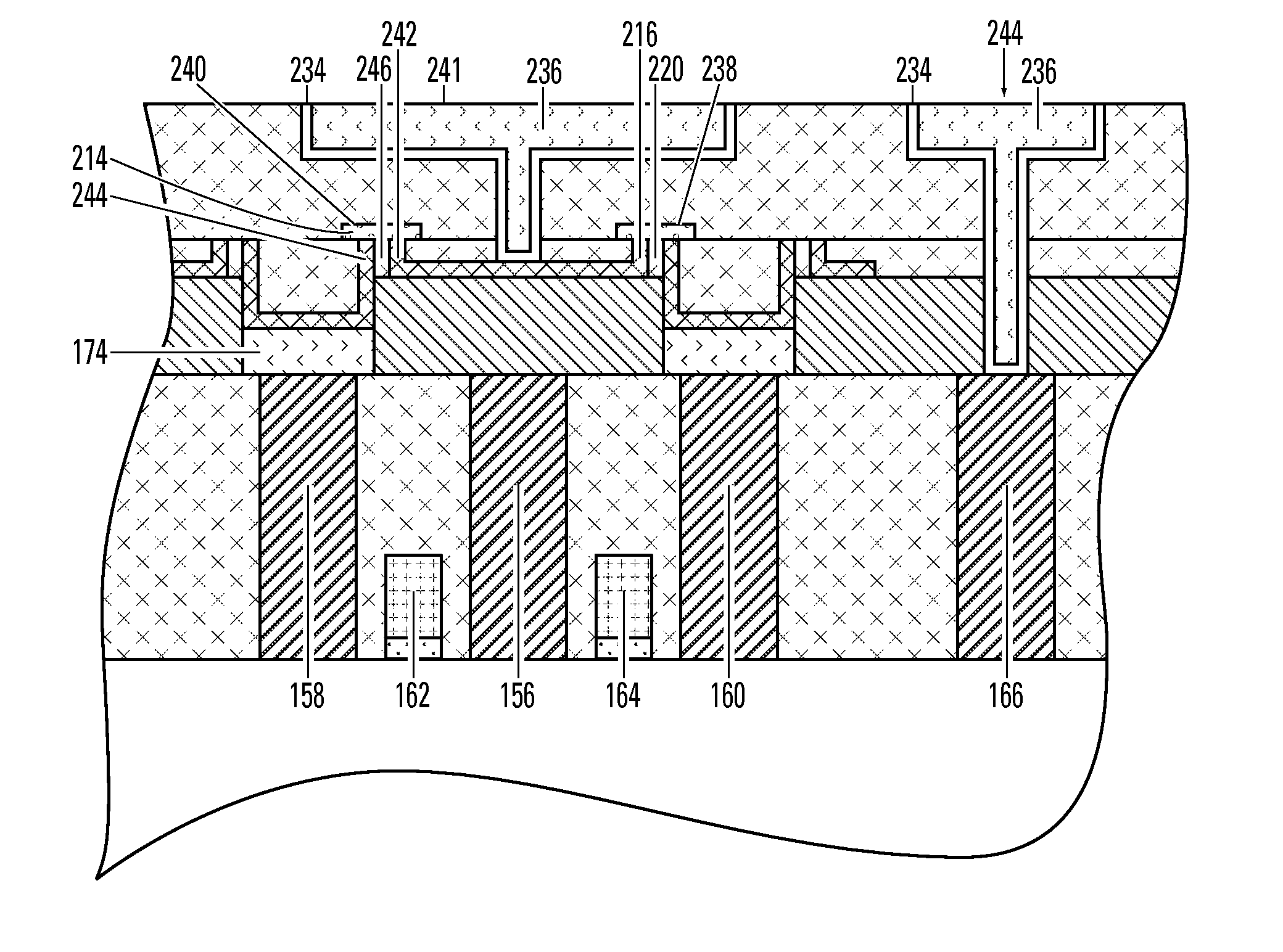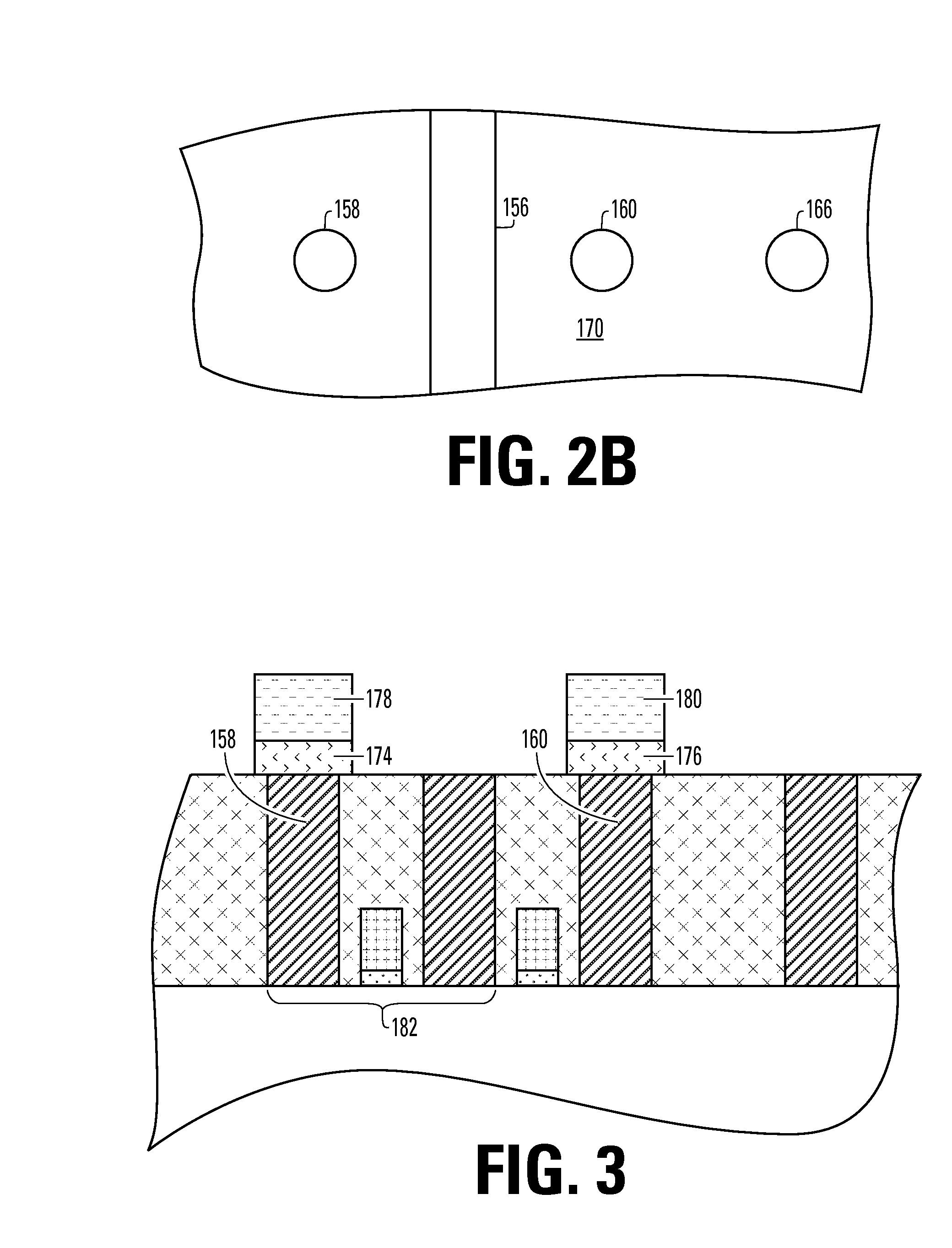Resistor random access memory cell with reduced active area and reduced contact areas
a memory cell and resistor technology, applied in semiconductor devices, semiconductor/solid-state device details, electrical devices, etc., can solve problems such as problems such as problems such as the manufacturing of such devices with very small dimensions, and achieve the effects of improving the thermal isolation of the bridge, high thermal conductivity, and increasing the current density of the bridg
- Summary
- Abstract
- Description
- Claims
- Application Information
AI Technical Summary
Benefits of technology
Problems solved by technology
Method used
Image
Examples
Embodiment Construction
[0023]A detailed description of thin film fuse phase change memory cells, arrays of such memory cells, and methods for manufacturing such memory cells, is provided with reference to FIGS. 1-19.
[0024]FIG. 1 illustrates a basic structure of a memory device 100 including a bridge 102 of memory material, such as programmable resistive material on sidewalls of an electrode layer (see FIG. 10, ref num. 200), which comprises a first electrode 104 having a first electrode length, represented by a double-ended arrow 105, a second electrode 106 having a second electrode length, represented by a double-ended arrow 107, and a sidewall insulating member 108 between the first electrode 104 and the second electrode 106 having a sidewall insulating member length, represented by a double arrow 109. The first electrode length is typically, but not necessarily, essentially the same as the second electrode length, both of which are determined by the thickness of the electrode layer. Similarly, the leng...
PUM
 Login to View More
Login to View More Abstract
Description
Claims
Application Information
 Login to View More
Login to View More - R&D
- Intellectual Property
- Life Sciences
- Materials
- Tech Scout
- Unparalleled Data Quality
- Higher Quality Content
- 60% Fewer Hallucinations
Browse by: Latest US Patents, China's latest patents, Technical Efficacy Thesaurus, Application Domain, Technology Topic, Popular Technical Reports.
© 2025 PatSnap. All rights reserved.Legal|Privacy policy|Modern Slavery Act Transparency Statement|Sitemap|About US| Contact US: help@patsnap.com



